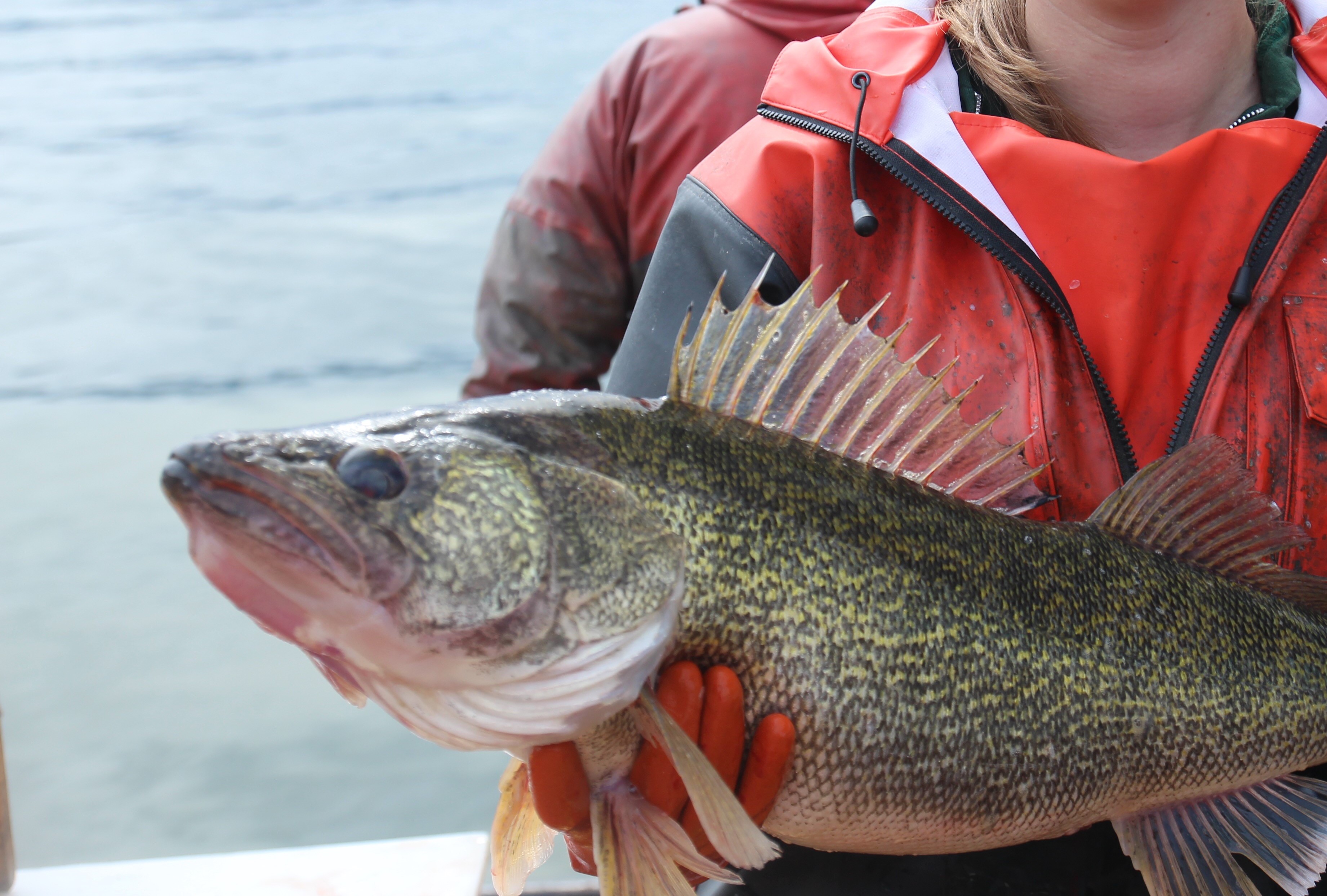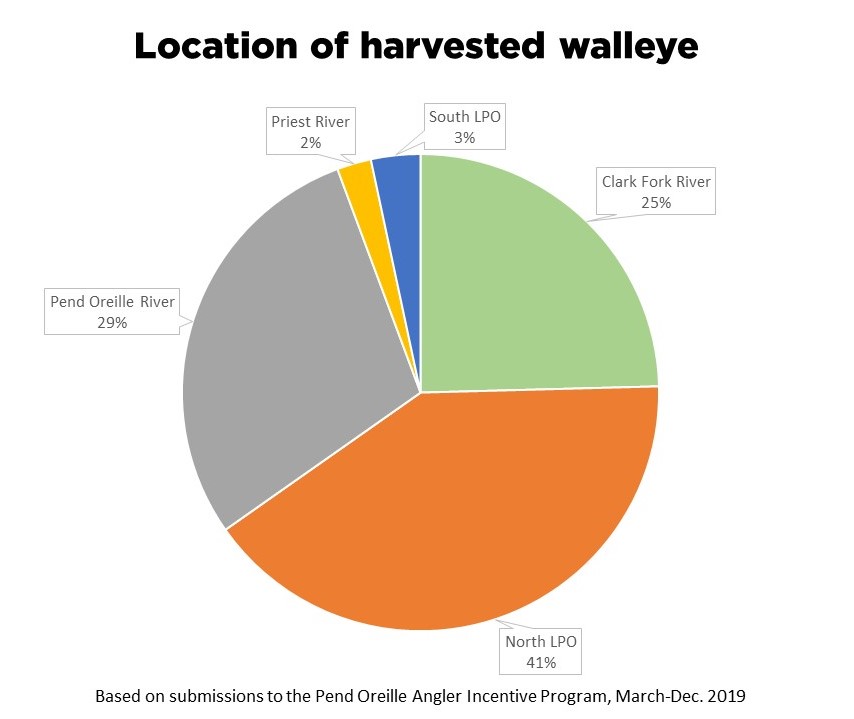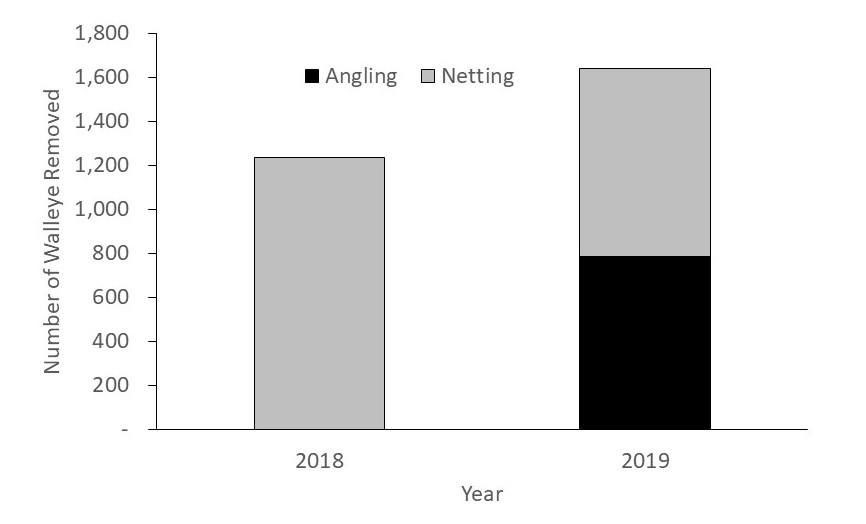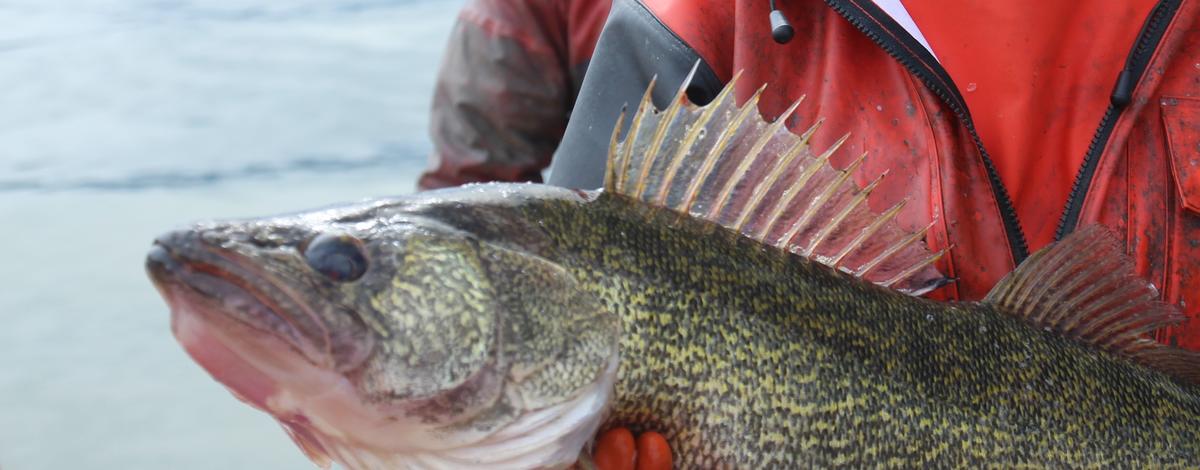Anglers won nearly $9,000 in monthly drawings, high-dollar reward tags still at-large

In March 2019, Fish and Game kicked off the first year of the walleye lottery program by announcing that $50,000 in reward money was swimming in Lake Pend Oreille. Nearly 200 anglers participated in the inaugural season and winners took home just under $9,000 in prize money.
In order to enter the lottery, anglers submitted walleye heads to Fish & Game freezers located throughout the region. There were two ways to win. First, anglers could catch walleye implanted with a microscopic, $1,000 reward tag in their snout, undetectable without a special scanner. Anyone who submitted a tagged head would automatically win. Second, each head submitted provided one entry into a monthly drawing of ten $100 rewards.
Unfortunately none of the $1,000 tagged fish were submitted last year. Fisheries managers want to change that in 2020, adding even more $1,000 tags to the pool and arming anglers with walleye data gleaned from the first season.
“Our goal is to tag an additional 50 high-dollar reward fish ahead of Memorial Day weekend,” said Ken Bouwens, mitigation staff biologist for Fish and Game.
First year trends provide fishing clues
Data from the first year of the lottery may help anglers strategize their next walleye fishing trip. The majority of walleye caught by lottery participants came out of the northern half of the lake, where the waters are generally shallower and warmer.

“In early May, walleye anglers were finding fish in the Clark Fork River and on the Clark Fork River Delta. Now that the walleye spawn is predominantly over, the Clark Fork and Pack River Deltas and the shallow warming bays west toward Sandpoint should be good bets in the coming weeks,” shared fisheries research biologist Pete Rust.
In addition to angler harvest reports, biologists use radio telemetry to track fish movements by month. Through summer 2019, the Sandpoint long bridge and Clark Fork River Delta consistently detected higher numbers of walleye compared to the rest of the system. The Pend Oreille River near Laclede and Clark Fork River also had high detection rates during the summer months.
Month by month maps can be found at the bottom of this page.
Lottery as a research tool
When submitting walleye heads for the lottery, anglers provide important data like size of fish, location and date of harvest. This information is key for researchers to understand how recreational angling affects the walleye population in Pend Oreille. The lottery is funded through the Clark Fork Settlement Agreement.
Walleye are a non-native predator in Lake Pend Oreille. Biologists are concerned that an unchecked walleye population could threaten the entire fishery, much like lake trout did in the 1990’s and early 2000’s. To address the growing walleye threat, researchers implemented a two-pronged approach: incentivized angler harvest and three weeks of netting during the spawning season.
The goal of this experimental suppression program isn’t to remove walleye entirely from the lake. Rather, managers aim to keep walleye from collapsing existing fisheries like kokanee and rainbow trout.
In 2019, anglers submitted a total of 785 walleye heads, nearly equal to the number of walleye removed during spring netting efforts.

“We were happy to see that the number of anglers participating the walleye lottery was similar to the number of participants in the lake trout incentive program,” said Bouwens. “Most people submitted less than five heads, which tells us that lot of people are participating and not just a few experts who have figured out Pend Oreille walleye.”
For more information, including rules and submission locations, visit the Lake Pend Oreille angler incentive program website at idfg.idaho.gov/lake-pend-oreille-angler-incentive-program.

